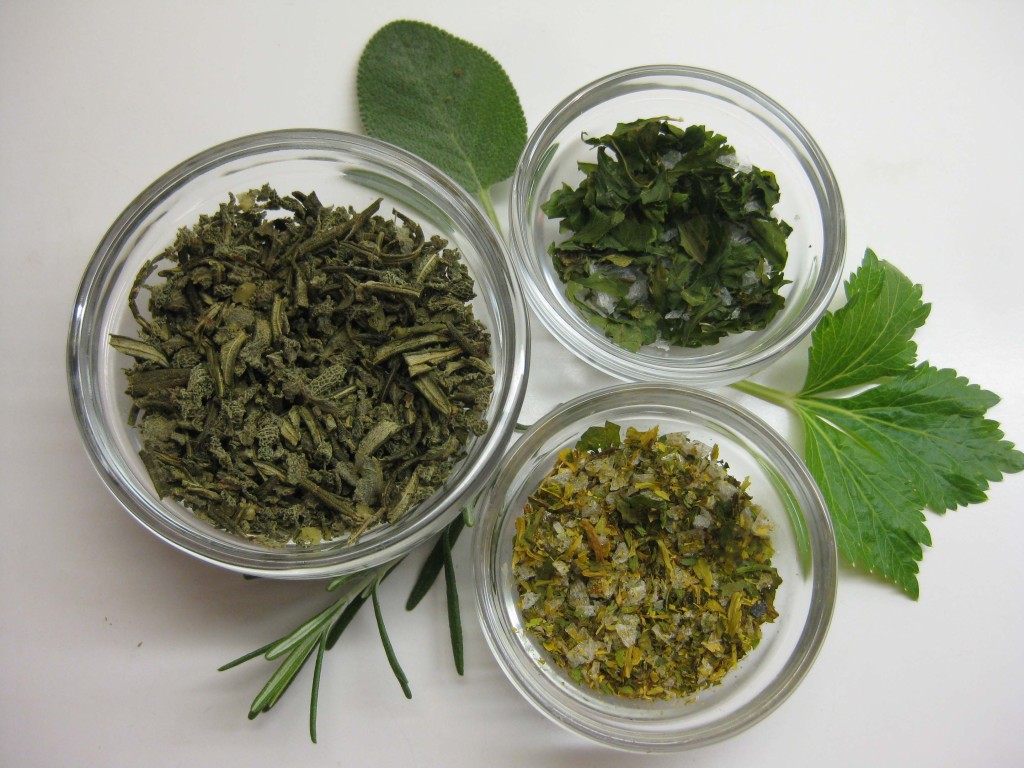
“How can a man grow old who has sage in his garden?”
“The young sow wild oats; the old grow sage.”
“The desire of sage is to render man immortal.”
“In the grand opera of cooking, sage represents an easily offended and capricious prima donna. It likes to have the stage almost to itself.”
“Yuck, it smells like dirty socks!” cried a CHIC student during a recent herb sniff test.
Sage is described by The Joy of Cooking as, “…perhaps the best known and loved of all American seasonings.” Despite this, and as you can see by the commentary above, many people may still be unfamiliar with all the wonders sage has to offer.
Sage is native to the North Mediterranean Coast and was widely used by the Greeks, Romans and Arabs. At first, they primarily used sage for medicinal purposes but then eventually it was used for culinary purposes too. Sage was also highly prized in China; a single chest of sage leaves could be traded for 3 chests of the finest China tea. The Italians, French and Germans all use sage for various medicinal and culinary purposes.
The latin name for sage is Salvia which means loosely, “to be in good health” or “to cure or save”. The notion of sage as an herb of longevity reflects its early roots as a sacred herb with healing powers. It was used for snakebites, eye problems, infection, epilepsy, intoxication, memory loss, and a variety of intestinal problems. It was also used for various cosmetic purposes. And just so you know, mixed with vinegar, sage was considered a good defense against the plague. Modern medicinal purposes include using a sage infusion as a gargle to ease sore throats and laryngitis. Sage aids indigestion, is an anti-flatulent and a mild laxative.
In the kitchen, sage is used to season poultry stuffing, any sort of onion mixture and is often paired up with rich fatty meats including duck, pork, veal and sausage. Sage is a member of the mint family and as such has a slight astringent quality that cuts through fatty meat (not unlike a stick of spearmint gum cuts through a “tired” mouth). Sage is also great with risotto, pickles, tomato sauces and cheese / egg dishes. The Greeks enjoy a cup of sage tea from time to time. Browned Sage Butter is a delightful treat over fish or pasta. I even found a couple of dessert recipes that include sage.
Fresh sage comes in many colors however the typical garden sage is easily identified by both touch and smell. Garden / common sage has very soft “downy” pale green-gray leaves that feel like lamb’s ears. It has an earthy, woodsy smell that some might describe as musty or “stinky socks”. Because sage is so pungent, it is rarely used raw – it needs a little cook time to calm down. Only the smallest, young leaves are eaten raw in salads. Fresh sage can be kept in the refrigerator up to one week. It is widely available at grocery stores. In addition, most garden centers carry sage plants, including the interesting sage variations.
Be warned when using dried sage; it must be used sparingly since it is even stronger than fresh. It is often found in the dry form as “rubbed”. This makes the sage look like a ball of dust… which goes nicely with its pale green-gray color and musty smell. Dried or rubbed sage leaves must be kept in a tightly closed container, in a cool dark place. Dried sage will lose both its color and powerful flavor if not stored properly. One year is reasonable.
Mushrooms with Cream and Sage
1 lbs white mushrooms, large dice
2 cups heavy cream
2 T. chopped sage
2 T. dry sherry
salt, pepper to taste
Toast points
Put mushrooms, salt, pepper and cream in pan. Simmer until thick, about 1 hour. Add sherry, sage and simmer 10 minutes. Spoon over toast points.
Leave a Reply